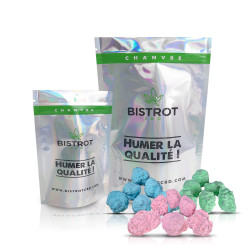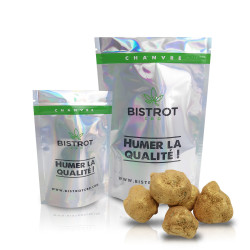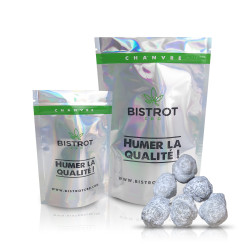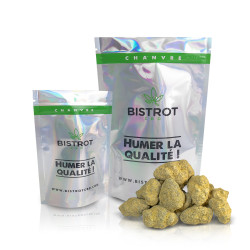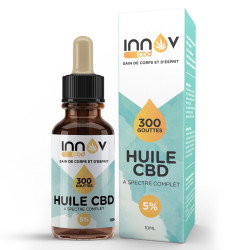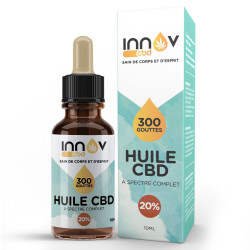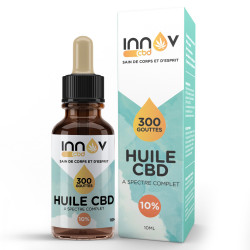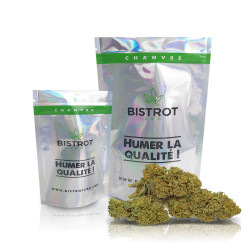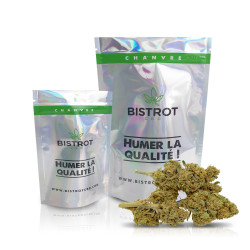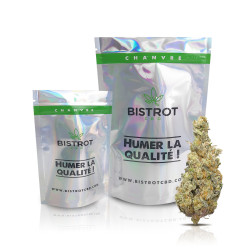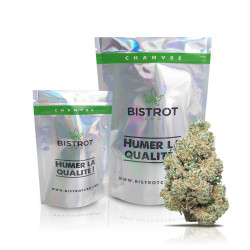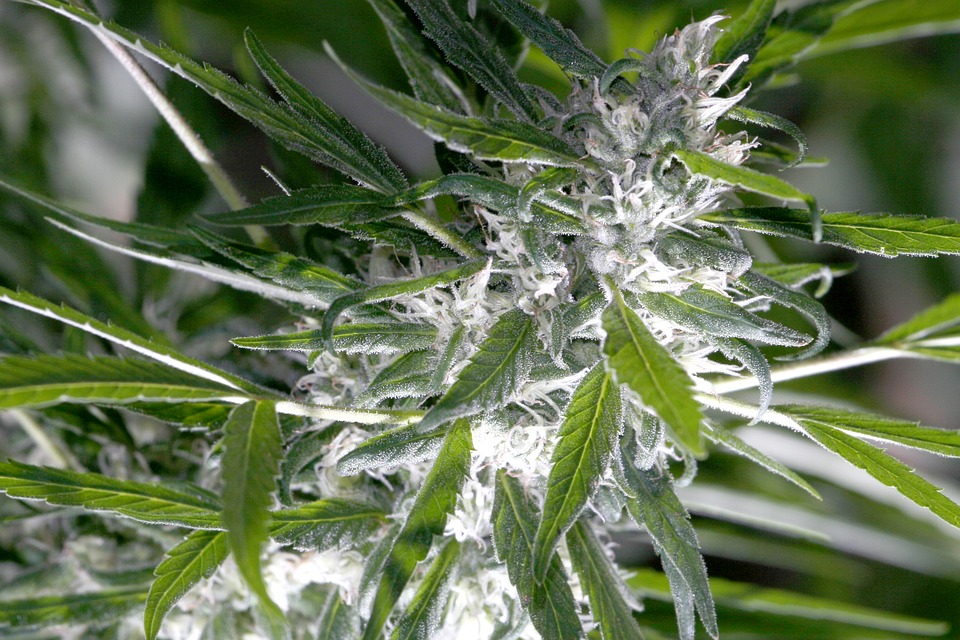
This plant, known worldwide for its psychotropic effects, hides in reality other more or less interesting properties from an industrial but also therapeutic point of view. Indeed, cannabis comes in an impressive number of varieties more or less specific to a use. If in a very detailed text, we have described this plant in length, width and breadth, here, we will try to present it briefly in order to answer all kinds of questions about it.
Cannabis as a plant
The
hemp plants
are generally dioecious (males and females necessary for fertilization) and are distinguished on this point as much by their anatomy as by their composition:
– The female plants produce the large resinous flowers dear to the consumers often in the form of clusters along the branch, at the internodes and at the apex of the stems. Female hemp plants are increasingly produced from feminized seeds in order to guarantee the sex and therefore the yield of the crop.
– Male plants produce small bell-shaped flowers at the base of the leaves. If their presence is essential so that there is fertilization and thus production of seeds allowing to sow new individuals, for the cultivators of weed, the pollen of the male plants can ruin a harvest of female plants, they are then very often torn off as soon as possible distinction of the sex.
The cannabis plant
Like the majority of the plant kingdom, a cannabis plant is composed of :
– Of roots: long and white. As with most plants, hemp roots absorb minerals, nutrients and water from the substrate in which they are located for photosynthesis. Place of energy storage.
– A main stem and branches: often hollow and grooved (especially for the sativa varieties) and rich in fiber (industrial exploitation). The stem is intersected by nodes from which the leaves and then the branches (themselves divided into sections) are formed.
– Of leaves: hemp leaves are universally known and represent the symbol of cannabis. They are formed of toothed leaflets in more or less variable number according to the variety (sativa, indica or rudéralis), being able to go in extreme cases until 15 (but generally, between 5 and 9). Their appearance (size, thickness, density, color, number of leaflets) also varies from one subspecies to another so that a trained eye can recognize an indica from a sativa just by looking at their leaves.
– Of flowers: variable in all points (sex, color, size, density, composition, odor, …) depending on the sex of the plant but also its variety. The flowers of female plants are globally composed of pistils, calyces and trichomes to which are mixed small resinous leaves. Trichomes are the site of biosynthesis of the active compounds of cannabis (terpenes, cannabinoids and flavonoids). Hemp buds are particularly appreciated for recreational use (drug or CBD product). However, in recent years, they are moving towards therapeutic use.
– Of seeds: shaped like a small smooth rugby ball, often spotted, of variable color and size. In addition to their primary function which is to generate a new individual, the seeds of cannabis are used in the human and animal food.
- Pressed to give hemp seed oil,
- Roasted to be ingested as a food supplement,
- Peeled to feed animals (bark).
Cannabis as a drug
Among all the drugs listed, the
Indian hemp
is the most consumed illicit substance in France by both youth and adults. In 2017, 44.8% of adults between the ages of 18 and 64 would use a joint at least once, up from 42.0% in 2014 (1). In reality, if we tend to stigmatize cannabis as a drug, it is not the whole plant that is to blame but one of its active compounds: the cannabinoid tetrahydrocannabinol (THC) (2). This psychotropic compound can indeed lead to psychic dependence.
Despite these health controversies, the use of cannabis is increasing every year for its many effects:
– euphoric
– stimulating, “cerebral high
– relaxing (muscular and/or cerebral), “body stone”, “couch lock” effect
– therapeutic (analgesic, anxiolytic, fight against insomnia, appetite regulation, anti-nausea, …)
Today, therapeutic cannabis is still under study, despite the many virtues reported by its users. Despite a lack of data allowing the authorization of its sale on the French market, finding cannabis (even illicit) is within the reach of everyone as the traffic is strong.
The most common forms of cannabis
Cannabis as a narcotic drug is essentially found in 3 forms, classified according to their level of THC (psychotropic compound):
– grass, weed, marijuana, weed, … : usually smoked in a joint with tobacco or inhaled pure in a vaporizer.
– hashish, pot, cannabis resin, … usually smoked in a joint with tobacco or inhaled pure (or mixed with tobacco) in a vaporizer.
– oil: one of the most concentrated forms of cannabis. It is smoked on a cigarette on which a few drops of oil are added, in a pipe. It can also be inhaled with a spray bottle.
These are the most common consumption patterns. However, it is possible, but more marginal, to ingest hemp other than by smoking or inhaling it (cooking, infusion, …). You will just have to be more patient (digestion) to feel the effects. But they will be there!
Legal cannabis
In recent years, it is not uncommon in some European countries to find so-called legal cannabis. In France, since 2018, shops more or less specialized in the sale of cannabis products have actually opened. In their display cases, hemp flowers, seed oils, CBD liquid, leaf teas and more. These products are sold legally as those of the famous coffee shops in Amsterdam (Netherlands). While these products are derived from cannabis, they are not quite like their Dutch counterparts:
- They contain a rate in THC lower than 0,2%. And this, in order to answer the French legislation concerning the varieties of hemp authorized to the exploitation, the marketing and the consumption (3).
The cultivation of such varieties has long been used for the richness of their fibers (industry). Today, they are also cultivated for their recreational and therapeutic effects. In addition to THC, other active compounds in cannabis are of interest to users. This is particularly true of CBD (cannabidiol). Most stores and their merchandise are often accompanied by this abbreviation:
– Bistrot CBD : French online store, legal dried hemp flowers and full spectrum organic oils (fullspectrum).
– OG Kush CBD: famous variety of herb in its version CBD (without THC).
– CBD oil: oil generally extracted from the stem and seeds of hemp (oil seeds).
– e-liquid CBD: liquid for electronic cigarette containing cannabidiol.
The demand for CBD continues to grow as the type of consumer becomes more and more diverse. CBD herb, oil and liquids are the most iconic forms of cannabidiol-containing products. However, the forms under which we find this cannabinoid, are becoming more and more diverse (oil capsule, resin, …).
The figures around cannabis and its legalization
According to the famous magazine specialized in the field of cannabis, Newsweed, which itself relies on reports from the National Institute of High Studies of Security and Justice (INHESJ, published in 2016) (4) and the French Observatory of Drugs and Drug Addiction (OFDT) (5), it is estimated that:
– Number of cannabis users: 5 million
– Annual consumption of the French in 2020: 360 to 500 tons
– Substances: 66% marijuana, 32% hashish, 2% other (oil, solid concentrates, …)
– Average resale price: 10 € per gram for grass, 5 € per gram for hashish and 4 € per gram for cannabis concentrates
– Turnover: 3.24 billion euros
– France: 1st country in Europe to use cannabis
Despite the impressive estimates reported by the cannabis trafficking and thus the loss of government revenue, France is not currently considering moving toward legalization of cannabis. However, a press release from the Ministry of Health of June 3, 2020 reveals the amendment of Olivier Véran (Minister of Health), voted unanimously in the National Assembly, on the proposal of a 2-year experimentation of the medical use of cannabis. Initially planned for September 2020, this experimentation had to be postponed to January 2021, following the Covid-19 epidemic (6). Depending on the results (benefit/risk), if the French law is not ready to modify the list of narcotics by removing THC and, therefore, not to legalize the recreational use (THC) of hemp, medicines based on cannabis (other than epidiolex) could see the light of day and be prescribed with less difficulty.
To conclude…
Consumed since the dawn of time, cannabis has long been considered a magical plant for the states that its consumption provides. Arrived in France by the hippie movement of the years 60-70, this plant was very quickly popularized by the young people avid of strong sensations and the artists in lack of inspiration. Today, the use of cannabis concerns a large part of the population. As well for its recreational effects as for its hypothetical therapeutic action.
FAQ: Cannabis vs CBD
[sp_easyaccordion id=”9962″]
References:
- Spilka S., Richard J.-B., Le Nézet O., Janssen E., Brissot A., Philippon A., Shah J., Chyderiotis S., Andler R., Cogordan C. Illicit drug use levels in France in 2017. Tendances, OFDT, 2018, n° 128, 6 p. : https://www.ofdt.fr/BDD/publications/docs/eftxssyb.pdf
- Order of February 22, 1990 establishing the list of substances classified as narcotics: https://www.legifrance.gouv.fr/loda/id/JORFTEXT000000533085/2020-10-09/
- Article 2 of the order of August 22, 1990 implementing Article R. 5132-86 of the Public Health Code for cannabis: https: //www.legifrance.gouv.fr/loda/id/JORFTEXT000000351447/2020-10-09/
- Synthesis; Final Report for the Inter-ministerial Mission for the Fight against Drugs and Addictive Behaviors, 2016, National Institute for Advanced Studies in Security and Justice (INHESJ): https://www.newsweed.fr/wp-content/uploads/2018/02/synthese_rapport_argent_de_la_drogue.pdf
- Thematic synthesis: cannabis, 2020, OFDT: https: //www.ofdt.fr/produits-et-addictions/de-z/cannabis/
- ANSM: https: //ansm.sante.fr/S-informer/Points-d-information-Points-d-information/Experimentation-de-l-usage-medical-du-cannabis-poursuite-des-travaux-Point-d-Information
